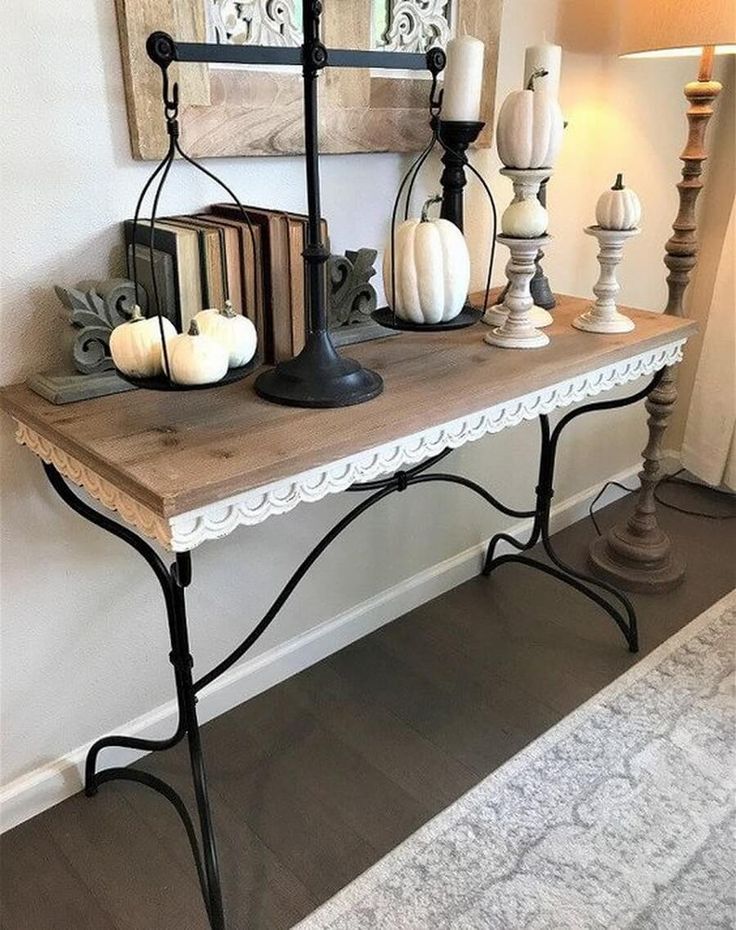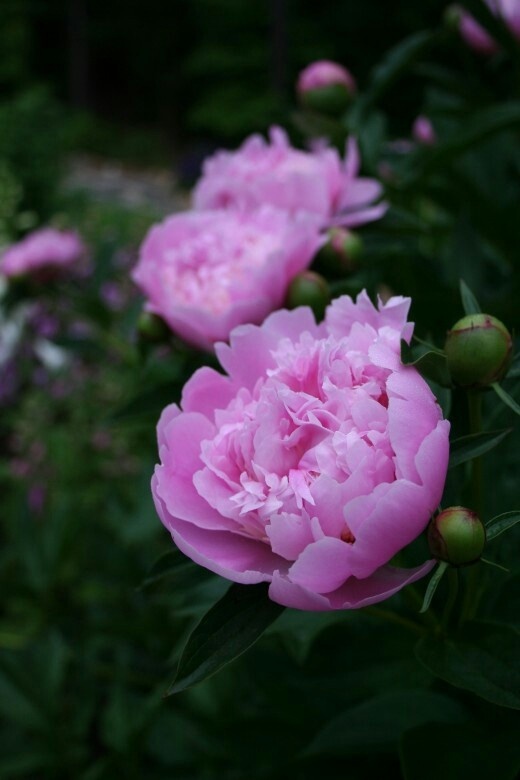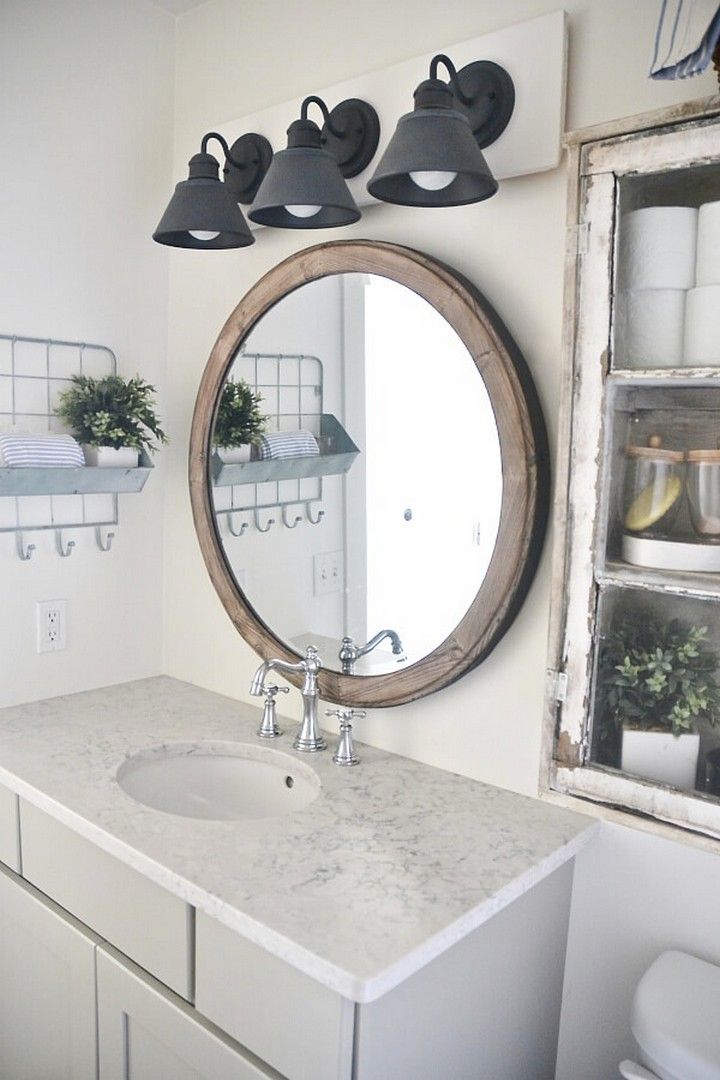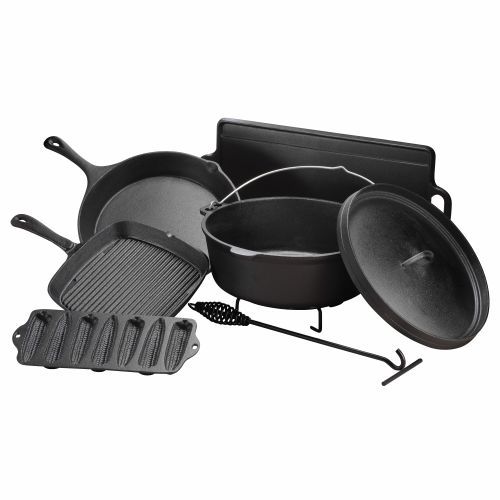How to contain bamboo from spreading
How to Contain Bamboo - A Helpful Illustrated Guide
Welcome to our bamboo guide. We put together this guide to help give our customers a better understanding how to contain bamboo by understanding a little about the plant, the different types and which may be ideal for their application. The main concern that we hear from people planting bamboo is regarding how to control the bamboo roots (rhizomes) and prevent them from overtaking the landscape. We address this issue specifically in the following guide.
Section 1: About Bamboo
Section 2: Bamboo Barrier Installation Guide
Bamboo is an evergreen perennial plant which popular because it grows fast and has a nice visual aesthetic. There are two primary types of bamboo; those with clumping “rhizomes” (roots) and those that spread out referred to as running rhizomes.
The article below deals with how to properly control invasive running bamboo varieties known for becoming invasive if not confined. We'll go step by step on properly containing bamboo through the use of high-density Polyethylene bamboo barriers.
Although bamboo has a reputation for getting out of control (and rightfully so!) with the proper barrier it can be effectively contained and can contribute to a beautiful landscape.
The easiest way to contain bamboo is by confining the space where the bamboo rhizomes (roots) can spread. By restricting the rhizomes and cutting down undesirable new shoots, you can allow them to thrive without worry of escape.
Many varieties of bamboo are sought after because they serve as excellent privacy screens and are evergreen year-round. Bamboo has become very popular over the last few decades as it's attractive, low maintenance, and straightforward to plant.
Some fast-growing species (not common in the United States) of bamboo can grow up to 2 inches per hour in the right climates making it one of the fasting growing plants globally.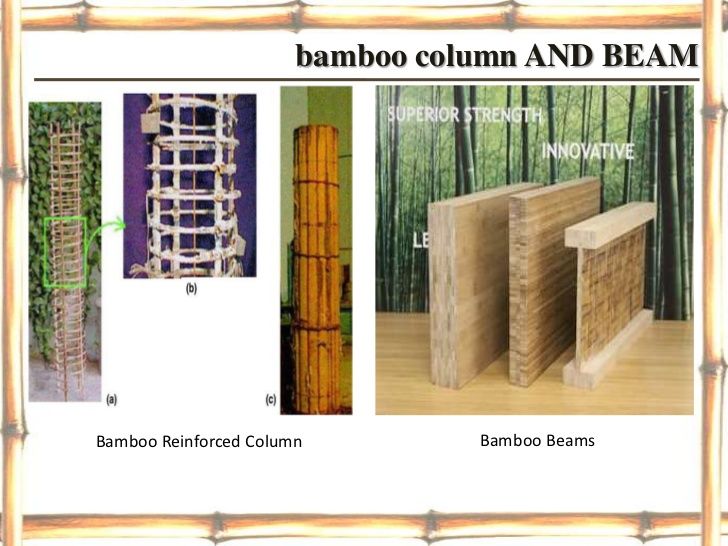
Some species reach full maturity in just three months and most mature in only a few years.
Running vs. Clumping Bamboo
Running bamboo can produce root shoots up to 40 feet in just a single season. The running rhizomes are invasive and can easily spread throughout the landscape if not property contained.
Clumping bamboo do not need as much control as they are typically self-containing. In more rare circumstances clumping bamboo can spread and when this does happen it can push with a high amount of force. For this reason, if planting clumping bamboo near a important structure or very sensitive area of the landscape, a barrier of 100 mil thickness is strongly recommended. Due to it's self-containing nature, the threat for invasion is much lower than their running rhizome cousin.
Not all types of bamboos can grow out of hand. The clumping rhizome species have short rhizomatous structure, which makes it difficult for them to stretch more than several inches, eventually making discrete clumps.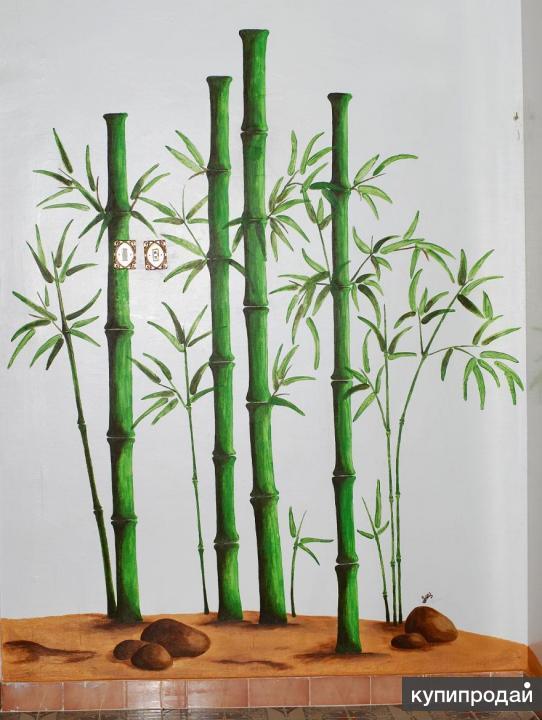 These clumps will grow as new one’s form and may need anywhere between 2 to 10 feet or more space for them to reach full maturity.
These clumps will grow as new one’s form and may need anywhere between 2 to 10 feet or more space for them to reach full maturity.
Running rhizomes grow underground undetected up to 20 feet away from the original planting. If they encounter a surface that they cannot grow through, or around, then they will change course and try a different direction. Because of this predictable behavior it's crucial to properly place and install a bamboo barrier so that there are no breaches in the barrier wall, and the rhizomes are unable to escape. If left alone, rhizomes will travel under driveways, sidewalks, patios, house foundations, and even sometimes through the cracks in the concrete floors such as sheds and garages
An image of the two different types of bamboo, running bamboo and clumping bamboo
How do I keep bamboo from spreading?The most effective way to keep bamboo plants from spreading is to install a subsurface barrier. To be useful for long term containment, the boundary should be made of HDPE (High-density polyethylene) and should be installed around the planting area.
To ensure that the bamboo rhizomes (the part of the bamboo plant that spreads) stay contained, it's recommended that the planting area is completely encircled. Additionally, the bamboo barrier should protrude approximately 2" above the ground. This protrusion allows the gardener to monitor the top edge of the plastic to quickly catch and manually prune any rhizomes that attempt to "jump" the barrier.
What is Bamboo Barrier?
A bamboo barrier is any product used in bamboo planting to prevent the spread of root rhizomes to protect valuable hardscapes and surrounding properties from damage. Plastic Bamboo barrier is most common and is available in different lengths and thickness depending on your application.
The barrier is usually a diversion type control technique with a smooth surface on the side facing the bamboo planting. A bamboo barrier is made from HDPE, a high-density polyethylene, which is more robust and superior to metals since it will not rust and is easy to install and will not rust or corrode over time.
Rhizome barriers are available in 18", 24", 30", 36", and 48" deep to offer additional protection from stray growth. The polyethylene material used to make bamboo barriers is from recycled regrind. The wall is impermeable to water and can also act as a water barrier.
A video showing the thickness and flexiblity of bamboo barrier.
Bamboo planted in a planter area contained by bamboo barrier.
How do Bamboo Barriers Work?
Bamboo barriers offer an effective method of controlling the spread of bamboo rhizomes.To understand how bamboo barriers work, you first need to know how running bamboo spreads. Running bamboo spreads by sending out rhizomes or stems underground. The stems can reach 20 from the original plant.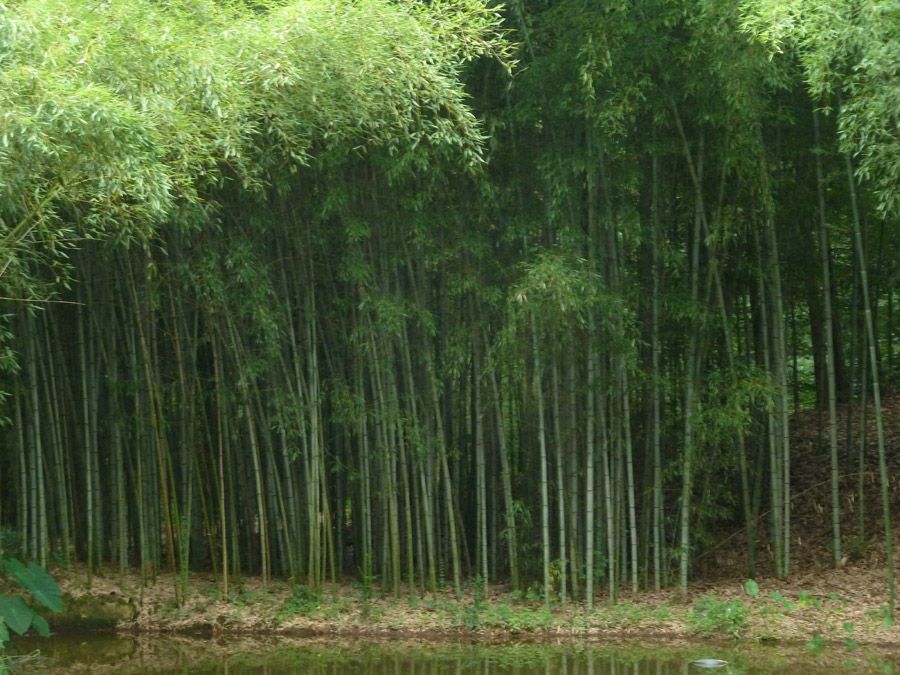 Once stretched out, new stems spread again from this point.
Once stretched out, new stems spread again from this point.
To contain the rhizomes the smooth High-Density plastic barrier acts as blockade to the running shoots and prevent them from leaving the planting area. The shoots after hitting the barrier with change direction and try to spread in a different direction. Most bamboos don’t tend to grow below 20” deep although it is possible depending on the specific variety.
PRO TIP: After installing your bamboo barrier continue to cut down any new rhizome shoots that surface outside of the planting area. These shoots will eventually die off as they are now cut off from the main plant.
What thickness of barrier do I need?
The actual thickness of the barrier required can vary depending on several different environmental factors, as well as the species of bamboo planted. Although 30 mil and 40 mil barriers can be useful in containing bamboo, there have been reports in various online bamboo communities of rhizomes "punching through" 30 and 40 mil material.
A 60-mil thickness is suggested for most bamboo plantings and 80-mil for more aggressive or larger species such as timber bamboo. 100-mil barriers are typically reserved for the most invasive bamboo, or for areas of critical concern where bamboo overgrowth would damage a costly property or landscaping.
PRO TIP: Best practice is to use 60 mil or thicker barrier for bamboo installations and rhizome defense.
Above: The different thicknesses of bamboo barrier compared.
Bamboo barrier being slid into a trench along a fencline.
How Deep Does Bamboo Barrier Need to Be?
Typically bamboo roots or rhizomes tend to not grow below 20 inches deep. Because of this, many find that a 24-inch barrier to be sufficient. A typical installation for a 24-inch rhizome barrier allows for it to rest in a 22-inch depth trench and rise above grade by 2 inches.
Depending on the variety of bamboo that is planted a deeper barrier may be necessary.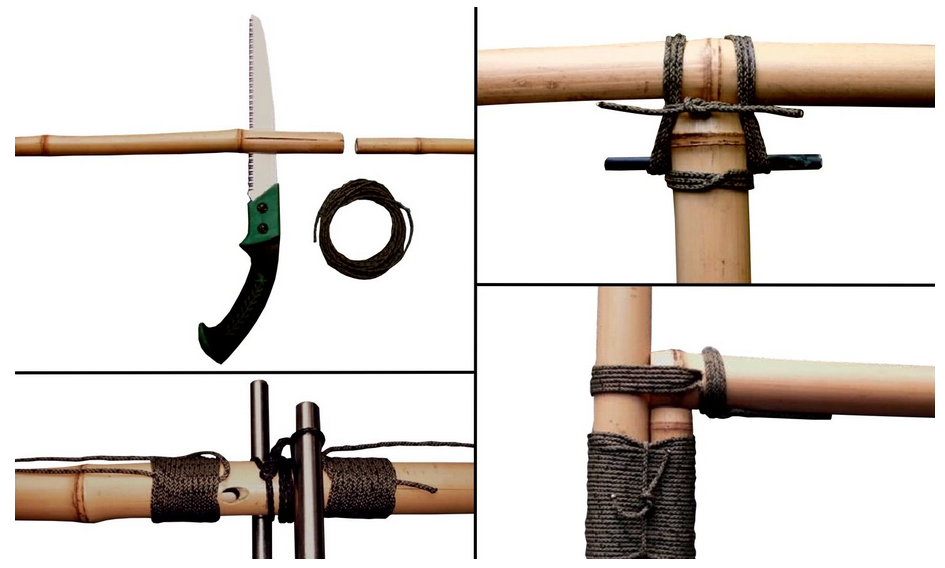 Site specific factors can require a deeper barrier as well such as a sloping grade or bamboo planted in a raised planter. We offer barriers in a maximum depth of 48".
Site specific factors can require a deeper barrier as well such as a sloping grade or bamboo planted in a raised planter. We offer barriers in a maximum depth of 48".
Why do Bamboo Barriers Occasionally fail?
Rhizome Barriers fail primarily for the following three reasons:
1. Rhizomes make their way under a barrier that is too short, placed too shallow, or conversely, the root rhizomes make their way over the barrier wall.
2. Roots creep through cracks where the barrier ends meet due to an insufficent overlap or if an incorrect seam tape was utilized.
3. Installation of too thin plastic enables accidental holes or puncturing to occur during installation. Light barriers can fatigue over time from friction against the rocky soil.
Bamboo Barrier Installation Guide
Below are steps that are involved when installing bamboo barrier around a bamboo plant.
Step 1:
Dig a trench on the site where you want to plant your bamboo. Remove the topsoil and the heavier sub-soil. When preparing the site, you should be careful not to create tight corners as this may result in the barrier collapsing due to unnecessary stress to the material.
Remove the topsoil and the heavier sub-soil. When preparing the site, you should be careful not to create tight corners as this may result in the barrier collapsing due to unnecessary stress to the material.
Step 2:
Remove or cut any rhizomes outside the area you need to contain. If you have well-established bamboo, it may be harder to eradicate, so the best thing to do is remove the rhizomes first.
Step 3:
Choose the correct bamboo barrier for your application. In general, a 60-mil wall will work for many applications, however you can never go too thick.
Step 4:
Place the bamboo barrier in the trench. The wall should stand out of the soil by at least two inches. Plastic protruding above grade is essential for preventing the rhizomes from escaping over the top without you knowing.
Step 5:
Overlap the barrier by 4' and use double-sided seam tape within the overlap to ensure rhizomes cannot breach the joined pieces sections.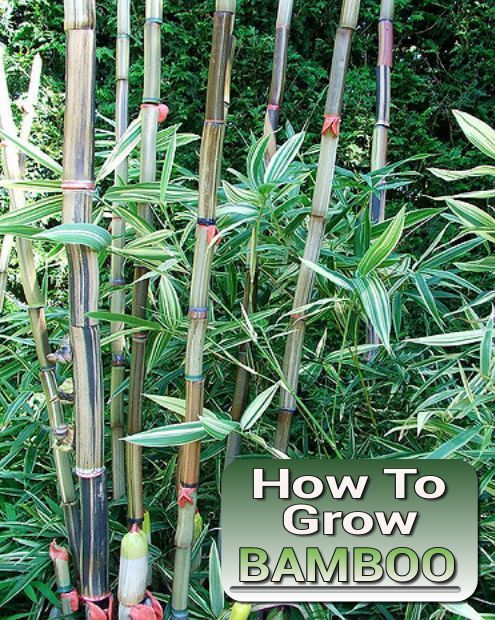 Place a number of horizontal and vertical strips within the overlap.
Place a number of horizontal and vertical strips within the overlap.
Step 6:
Backfill the trench with subsoil first and compact it to drive out any air pockets. Then complete the backfilling with the top light soil and pack it tight. Make sure there are no sharp objects when filling up the trench, including glass, stones, metal, or tree roots.
How to stop bamboo from spreading |
(Image credit: Getty Images)
If you've ever grown bamboo, you have definitely wondered how to stop bamboo from spreading. It might sound impossible, especially as the majority of weed-suppressant groundcovers will not stop it, but there are actually plenty of effective ways to stop bamboo from invading your garden.
If you are looking to introduce a bamboo plant into your backyard ideas, then you should give some thought to how to stop bamboo from spreading at the same time. By doing this when you are first planting your bamboo, you will save yourself the challenge of controlling an unwieldy plant further down the line.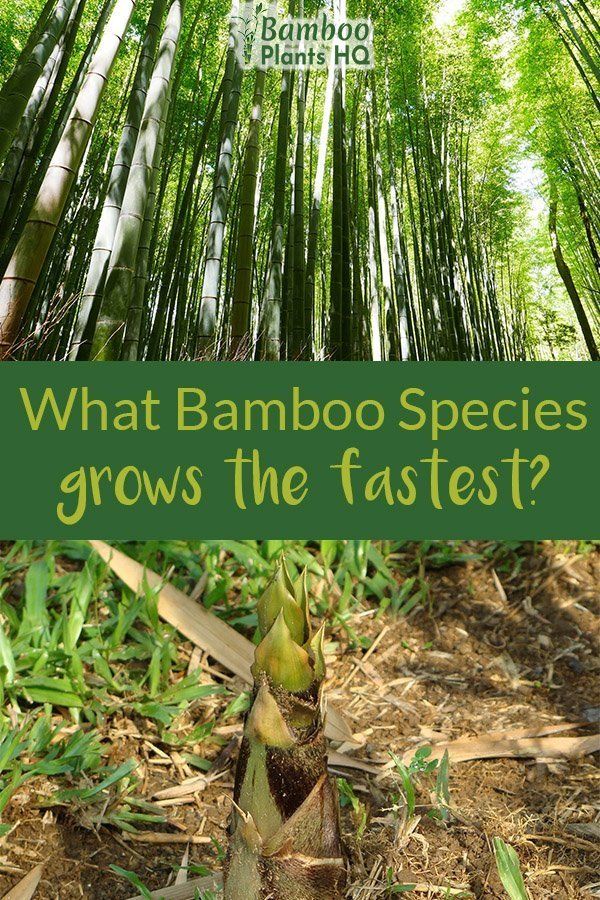
Despite its invasive propensities, bamboo is actually a highly beneficial plant when managed effectively. Due to its fast-growing nature, bamboo is often planted for screening since its dense, evergreen leafy appearance makes it an ideal plant for achieving garden privacy ideas.
'Furthermore, bamboo is an animal-resistant plant. Deer, raccoons, rabbits, and other mammals are not drawn to it at all, so planting bamboo in your garden can work to prevent animals from getting into your other plants,' explains Jeremy Yamaguchi, CEO of Lawn Love .
(Image credit: Getty Images)
How to stop bamboo from spreading
When it comes to figuring out how to stop bamboo from spreading, there are several different methods from which you can choose: from physical barriers through to chemical treatments.
Bamboo plants have two different growth patterns, there are clumping rhizomes and running rhizomes. Clumping rhizomes are the more manageable of the two and can easily be stopped from spreading with regular pruning. However, bamboo plants with running rhizomes are more problematic.
However, bamboo plants with running rhizomes are more problematic.
Bamboo plants with running rhizomes can grow underground for up to 20 feet from the main plant. 'If left alone, rhizomes will travel under driveways, patios, house foundations, and even through the cracks in concrete floors such as sheds and garages,' says experts from Rhizome Barrier . Therefore, if growing bamboo with running rhizomes, it is vital that you know how to stop bamboo from spreading to protect your garden space and prevent your bamboo plant turning yellow with stress.
(Image credit: Getty Images)
1. Stop bamboo from spreading by installing a sub-surface barrier
Using a subsurface barrier or root barrier to stop bamboo spreading is one of the most common methods. It is very similar to planting your bamboo in a large pot which is submerged under ground. The barrier contains the roots and prevents runners from cropping up elsewhere in your garden.
There are several different options of root barrier from which to choose.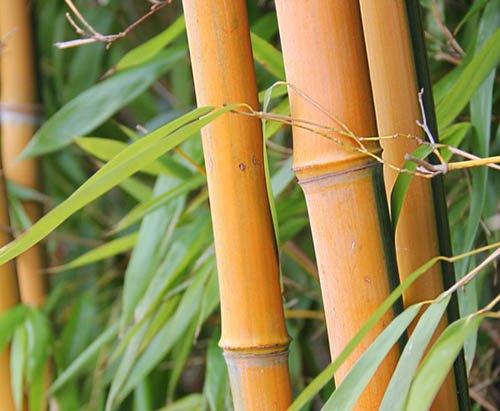 Typically these root barriers are made from high-density polyethylene and are purchased as a roll which is unrolled and buried below the ground to encircle the plant and prevent the roots from spreading. If you're wanting to stop bamboo from spreading opt for a root barrier of between 24 to 30 inches deep and a thickness of at least 60 mil.
Typically these root barriers are made from high-density polyethylene and are purchased as a roll which is unrolled and buried below the ground to encircle the plant and prevent the roots from spreading. If you're wanting to stop bamboo from spreading opt for a root barrier of between 24 to 30 inches deep and a thickness of at least 60 mil.
One of the most efficient ways of how to stop bamboo from spreading, root barriers are fairly easy to install. Simply dig a trench around your entire bamboo plant. Dig two inches shallower than your root barrier – for example for a 30 inch deep barrier, dig a 28 inch trench – as you want to keep a small amount of the barrier above ground to prevent runners going over the barrier. Then install the barrier, overlapping at the join, and backfill.
You can also install a subsurface barrier around a pre-existing bamboo plant, however, you will need to manually break any rhizomes or roots that have gone beyond the border prior to installation.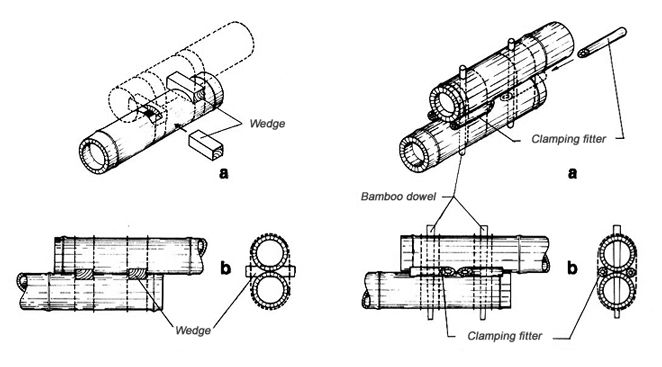
2. Sever the rhizomes to stop bamboo from spreading
(Image credit: Future / Claire Lloyd Davies)
Cost-effective but physically challenging, severing the rhizomes, also known as root pruning is a simple yet effective way to stop bamboo from spreading.
'All you have to do is take a spade or shovel and push it into the soil around the outside edge of where you want the bamboo to stop. Do it over and over again, overlapping where you last pushed your spade, until you have gone around the perimeter. This breaks the roots at that perimeter and prevents them from growing past it,' explains Jeremy Yamaguchi.
The main downside of this method is that it is only temporary and you will need to repeat it a few times every year to keep your bamboo plant from producing runners.
3. Stop bamboo from spreading by growing in a pot
(Image credit: Getty Images)
By far the easiest method to stop bamboo from spreading is to plant it in a pot rather than directly into the ground.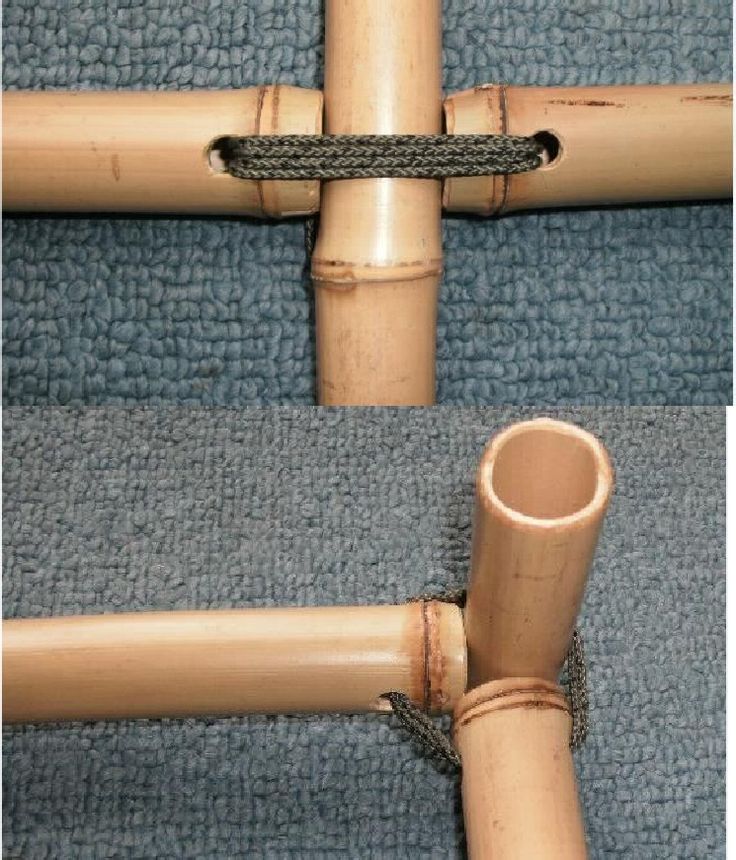 The pot contains the roots and prevents the bamboo from sending runners into the soil. Bamboo also makes for a beautiful addition to container gardening ideas and can be used as part of patio ideas to create a screen or windbreak.
The pot contains the roots and prevents the bamboo from sending runners into the soil. Bamboo also makes for a beautiful addition to container gardening ideas and can be used as part of patio ideas to create a screen or windbreak.
One word of note is that bamboo plants are very persistent, so avoid placing your pot onto soil as this will encourage the roots to grow through the drainage holes of the pot and send out runners that way.
4. Use a chemical weed killer – as a last resort
When researching 'how to stop bamboo from spreading', you will come across lots of different weed killers. While efficient, weedkillers are not the best option if you have other plants nearby or have pets or children that have free access to your garden. Weed-killers should only ever be used as a last resort due to the negative impact they have on wildlife garden ideas. You should first try the physical methods for how to stop bamboo from spreading before reaching for a chemical solution.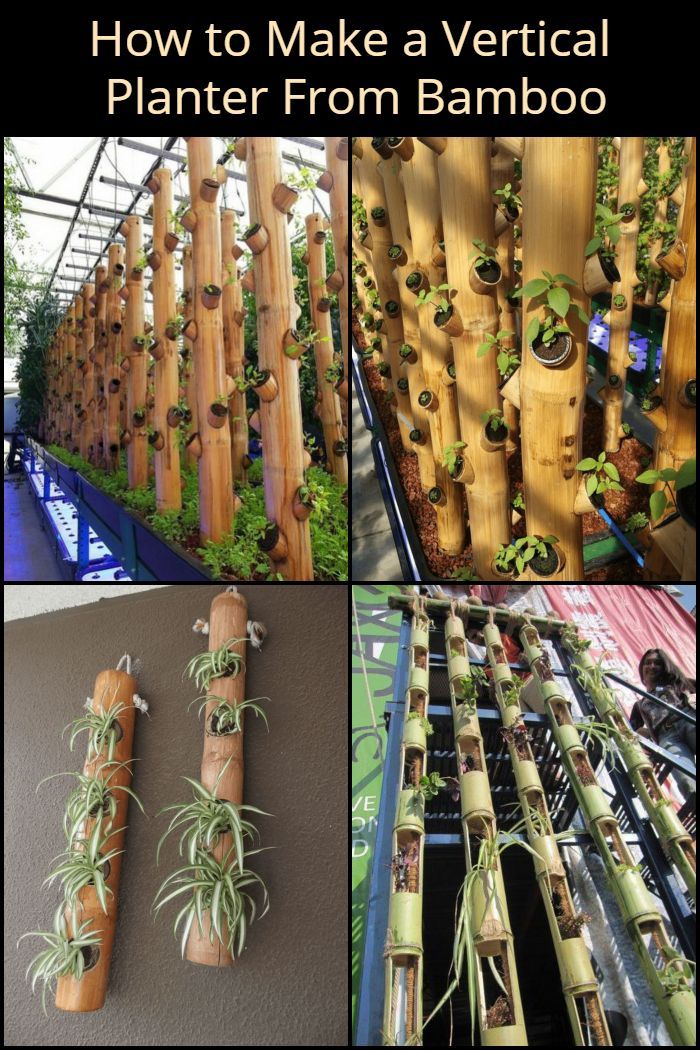
If none of the above options have worked, then weed killers can provide an effective, low-effort option that can be used to stop bamboo from spreading. Start by cutting down the unwanted canes to ground level. Then dress in protective clothing and ensure that children and pets are out of the way. Then apply a glyphosate-based weedkiller to the stumps – this is the same method used for how to remove Japanese knotweed. Cover with an old carpet and tarp and ensure that pets and children are kept away. Within a few days, this will kill the unwanted plant without harming the main bamboo.
(Image credit: Getty Images)
How do I keep my neighbor's bamboo from spreading?
You can keep your neighbor's bamboo from spreading by asking them to install a physical barrier around the plant or requesting that they replant the bamboo in a pot. If this is not possible, then you can simply manage the runners that appear in your own garden. You can do this by manually severing the roots at the point they enter your property and then digging up any plants that establish themselves in your garden.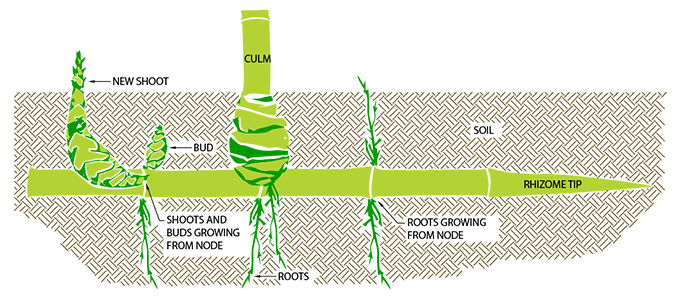
How do I permanently remove bamboo?
You can permanently remove bamboo by pouring boiling water on the exposed roots – this will scald the roots and then kill the plant. Start by cutting the bamboo plant as close to the ground as possible and then dig around the plant to expose the roots. Pour the boiling water on the exposed roots. Be sure to dispose of discarded bamboo roots and stems either by incinerating or binning, as these can re-establish themselves if put on a compost heap. This is also a popular method for how to get rid of weeds.
An alternative method is to simply dig up the plant. To do this you will need to cut off the rhizomes and remove from the ground. This is quite a labor-intensive method and you need to make sure that you've severed all the roots as otherwise you will have runners that will appear elsewhere in your garden.
Having graduated with a first class degree in English Literature four years ago, Holly started her career as a features writer and sub-editor at Period Living magazine, Homes & Gardens' sister title. Working on Period Living brought with it insight into the complexities of owning and caring for period homes, from interior decorating through to choosing the right windows and the challenges of extending. This has led to a passion for traditional interiors, particularly the country-look. Writing for the Homes & Gardens website as a content editor, alongside regular features for Period Living and Country Homes & Interiors magazines, has enabled her to broaden her writing to incorporate her interests in gardening, wildlife and nature.
Working on Period Living brought with it insight into the complexities of owning and caring for period homes, from interior decorating through to choosing the right windows and the challenges of extending. This has led to a passion for traditional interiors, particularly the country-look. Writing for the Homes & Gardens website as a content editor, alongside regular features for Period Living and Country Homes & Interiors magazines, has enabled her to broaden her writing to incorporate her interests in gardening, wildlife and nature.
False finger. Scientists have solved the evolutionary mystery associated with pandas
A new study has revealed the history of the development of the so-called sixth, "false" finger in the panda.
Related video
Pandas, sometimes called the bamboo bear, have an unusual formation on their front paws, the so-called "sixth toe". This is a modified sesamoid leg bone of the panda, which scientists call the radial sesamoid, allows the animal to more easily hold bamboo stalks.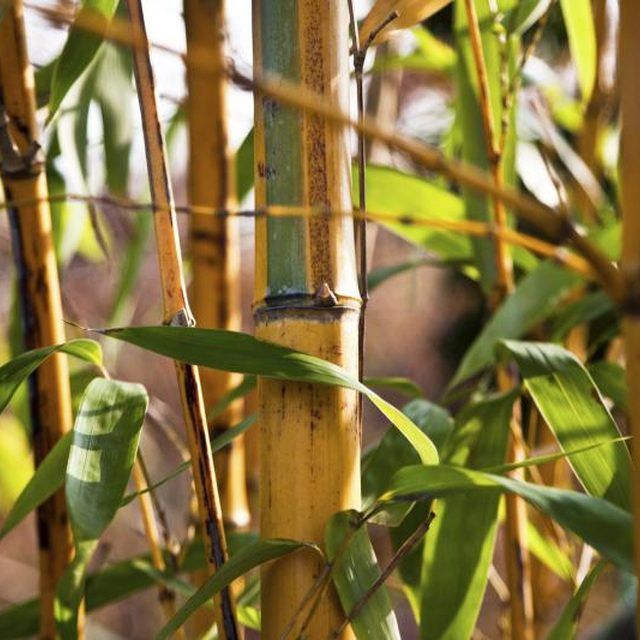 Now scientists have figured out when this "false finger" appeared and what is the history of its evolution, according to The Guardian.
Now scientists have figured out when this "false finger" appeared and what is the history of its evolution, according to The Guardian.
Scientists have known for more than 100 years that pandas have a sixth toe on their front paws. Thanks to this small protrusion, animals can better hold the bamboo stems and thus, the process of feeding them is simplified. Pandas are real gluttons, because they need to eat almost 40 kg of bamboo a day to get enough. And for this, pandas spend 14 hours a day.
Pandas are real gluttons, because they need to eat almost 40 kg of bamboo per day to get enough. And for this pandas spend 14 hours a day
Photo: New Atlas
Now, scientists have finally figured out when pandas got their unusual "sixth toe". Scientists believe that this "finger" played a crucial role in the transition of pandas from omnivores to vegetarians that eat bamboo.
The panda, sometimes called the bamboo bear, has an unusual formation on its front paws, the so-called "sixth toe". This modified sesamoid leg bone of the panda, which scientists call the radial sesamoid, allows the animal to more easily hold bamboo stalks.
Photo: Nature
The fossilized remains of a long-extinct relative of the panda called Ailurarctos, found in China, helped solve this mystery. Scientists estimate the age of these fossils at 6-7 million years. And it was in this relative of modern pandas that scientists discovered the oldest evidence of the existence of an unusual sixth toe on the paws.
According to Xiaoming Wang of the Los Angeles County Museum of Natural History, USA, this "false toe" millions of years ago was larger than that of today's pandas.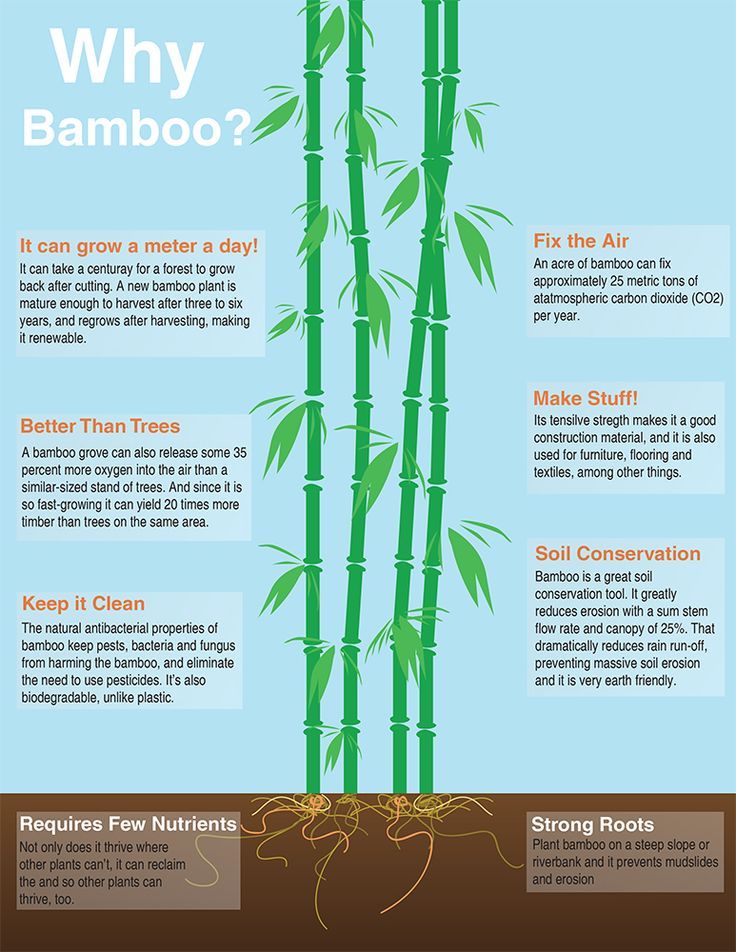 In addition, modern pandas have a hook at the end of an unusual formation, which allows them to hold the bamboo more firmly.
In addition, modern pandas have a hook at the end of an unusual formation, which allows them to hold the bamboo more firmly.
According to Xiaoming Wang of the Los Angeles County Museum of Natural History, USA, this "false toe" millions of years ago was larger than that of modern pandas. In addition, modern pandas have a hook at the end of an unusual formation, which allows you to hold bamboo tighter.
Photo: Nature
Before scientists discovered the fossilized remains of an ancient, extinct relative of the modern bamboo bear, the oldest evidence for a "sixth toe"-like structure was the fossilized bones of modern panda species that lived about 100,000 years ago.
"Modern pandas over these millions of years could develop on their paws longer than now, the so-called sixth fingers. But evolution made these processes change in a different way. This is probably due to the fact that pandas had to move on all 4 paws , as well as the need to have a shorter and stronger paw knob to hold the bamboo stem well," says Denise Su of Arizona State University.
But evolution made these processes change in a different way. This is probably due to the fact that pandas had to move on all 4 paws , as well as the need to have a shorter and stronger paw knob to hold the bamboo stem well," says Denise Su of Arizona State University.
According to Wang, the ancient ancestors of pandas were carnivores and this "sixth finger" helped them become vegetarians, since they now had no problem eating bamboo. Despite the fact that pandas are almost 100% herbivores, they can still eat small mammals on occasion.
As Focus already wrote, scientists have figured out how pandas maintain such a large weight, despite the fact that they eat almost exclusively bamboo.
Bamboo in the modern world
Bamboo is a very specific plant. This giant grass grows rapidly and becomes taller than some types of trees. Not every resident of the area where bamboo grows can see bamboo bloom in his life. It occurs only once every few decades, depending on the species.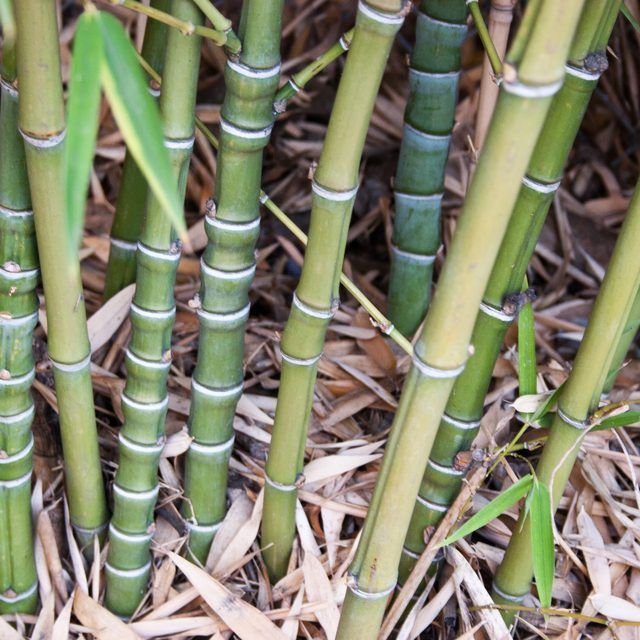 The first record of bamboo flowering was made by Chinese scientists back in 999 year. After flowering, the plants died, and a new bamboo forest soon appeared in their place, which bloomed only in 1114.
The first record of bamboo flowering was made by Chinese scientists back in 999 year. After flowering, the plants died, and a new bamboo forest soon appeared in their place, which bloomed only in 1114.
The natural range of bamboo (highlighted in green) is in the humid tropics, subtropics and temperate zone
In recent years, the whole world has received much more attention than before. It is regarded as a rapidly renewable ecological resource for light industry. The desire to use it in interior decoration does not decrease: growing in an apartment, picture frames, bamboo screens, curtains. Thanks to new technologies, bamboo furniture began to be made of modern design. Bamboo parquet appeared. Quite new is the tailoring of bamboo yarn and the production of textiles. Even in some complex technical devices, bamboo parts appeared, for example, in a computer - a case, keyboard, mouse, in a car - a chair.
Bamboo is also useful for the home craftsman. From it, an amateur master can make a staircase for a summer residence, a small decorative fence, a frame for a gazebo, that is, wherever strength, lightness, and aesthetics are required.
The scope of bamboo is expanding. There are organizations that promote it everywhere because of its high utility for society. In particular, they contribute to the supply of the population of territories suffering from earthquakes and other natural disasters with bamboo houses made using modern technologies. Such dwellings are cheap, quickly produced and safe from earthquakes.
Given the important social aspect of this plant and material, the United Nations has designated September 18 as Bamboo Day.
The growing production of various bamboo products is having a significant impact on the economies of some countries, especially China. In the West, they even came up with the comic term "bamboo capitalism." True, it concerns the Chinese economy as a whole, and not the bamboo industries, but they are also part of this entire second world economy.
In our country, it began to be cultivated in the 40-50s of the twentieth century. Now, in the places of initial breeding, on the Black Sea coast of the Caucasus, you can find real bamboo groves.
This site deals with bamboo in three aspects:
- plant
- unfinished or minimally finished material replacing wood and plastic in houses and technical devices
- deeply modified material (bamboo fiber) used in the manufacture of clothing
Distribution area
The natural habitat of bamboo is in both hemispheres in the humid tropics and subtropics, as well as in some places in the temperate zone. In Africa, due to the influence of the dry air of the Sahara, the northern limit of its distribution descends to the south. In East Asia, on the contrary, it rises north to the southernmost part of Sakhalin and the southern Kuril Islands (approximately 45 degrees north latitude). In South America, the boundary of growth is in Chile and Argentina at 47 degrees south latitude. There are extensive bamboo forests in many countries.
Bamboo museums have been established in some countries of the range. In them, he is revealed both as a plant and as a material for many things.
The inhabitants of the temperate zone began to grow bamboo in the 19th century. In the late 20th and early 21st centuries, this activity has gained great popularity.
Features
The secret to the widespread use of bamboo in the countries where it grows and its penetration into Europe is simple and it lies in the combination of its three properties: strength, lightness and rapid renewal. Durable and, at the same time, lightweight products in any field have been the subject of the dreams of mankind and the efforts of many generations of scientists and inventors. Of course, bamboo will not replace titanium, gold, aluminum. But, he successfully comes to those places where wood, plastics and some metals once reigned supreme.
The strength of bamboo is due to its fiber structure, and the lightness is due to two factors: the same fiber structure, as well as the tubular structure of the trunk.
Rapid regeneration is due to the very fast growth of the plant.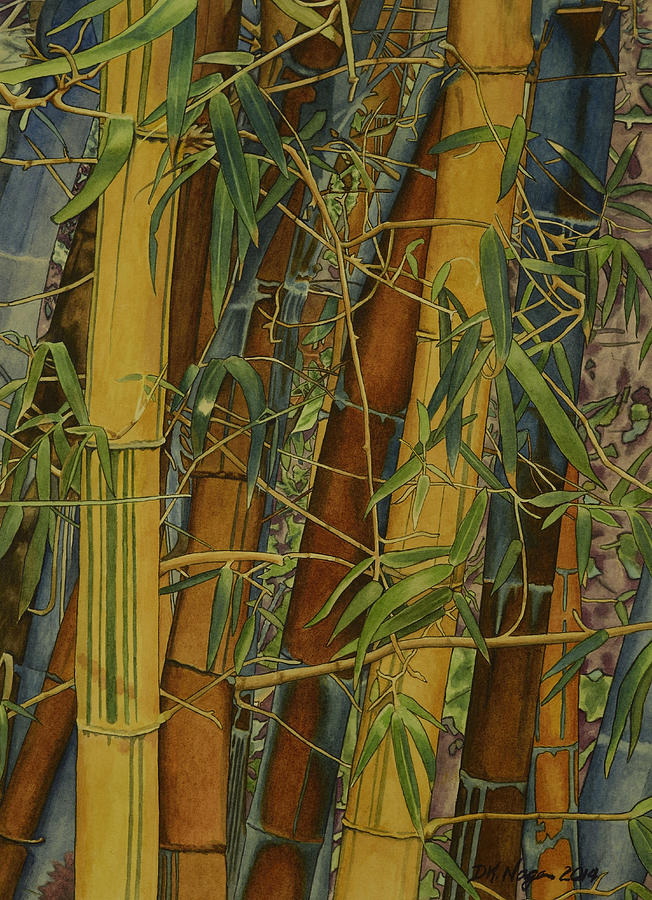
Economic and social aspects
Bamboo is a rapidly renewable raw material as it grows very fast. Replacing wood with it allows you to save forests in many countries of the world.
The growth of large tracts of bamboo in hard-to-reach areas in developing countries gives them a chance to open production in depressed regions. This makes it possible to eliminate the poverty of the population. There are special programs that are engaged in the implementation of such projects.
Bamboo produces 35% more oxygen than wood and also removes much more carbon dioxide. It has been found that bamboo absorbs up to 12 tons of carbon dioxide per hectare in one year. Japan and the Netherlands are even planting bamboo plantations to pay less under the Kyoto Protocol.
In this way, bamboo can help stabilize the planet's atmosphere, absorb excess carbon dioxide, and help fight global climate change. Also, it helps prevent soil erosion and reduce flood damage due to its extensive and strong root system.
China has achieved the greatest results in the use of bamboo. For this most populous country in the world, the issue of renewable resources is very important. There, the bamboo cultivation area was more than 5 million hectares, and the annual gross output of the bamboo industry was about $30 billion.
Bamboo is widely used in Chinese life. In addition to the simplest products, these are also bamboo fiber clothes, bamboo pulp paper, bamboo extract medicines, and bamboo vinegar. Bamboo charcoal is especially amazing. It perfectly purifies water, makes human skin smooth, and is useful for soil reclamation.
At the same time, excessive use of bamboo can also have a negative impact on nature. In parts of China where bamboo has become an industrial monoculture, it has begun to crowd out true forests and threaten natural diversity. And in those countries in which the owners of estates began to grow bamboo, there was a problem of its rapid spread to neighboring areas.
